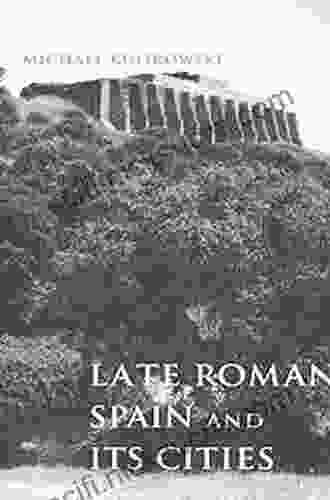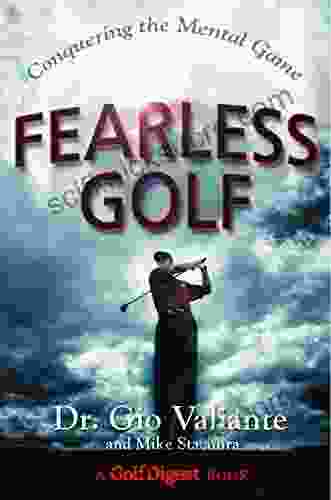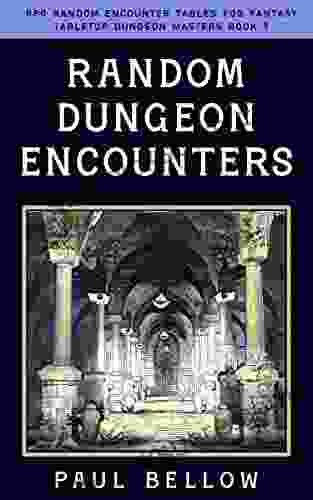Late Roman Spain and Its Cities: Ancient Society and History

Late Roman Spain, a captivating chapter in ancient history, unfolds from the 3rd century CE to the Visigothic conquest of the Iberian Peninsula in the 6th century CE. It was a period of profound transformation, characterized by the emergence of a vibrant urban landscape, the rise of Christianity, and the gradual decline of Roman imperial authority. This article delves into the captivating world of Late Roman Spain, exploring its cities, society, economy, and the legacies that continue to shape the region's identity.
4.6 out of 5
| Language | : | English |
| File size | : | 4077 KB |
| Text-to-Speech | : | Enabled |
| Screen Reader | : | Supported |
| Enhanced typesetting | : | Enabled |
| Print length | : | 516 pages |
| Lending | : | Enabled |
The Cities: Hubs of Urban Life
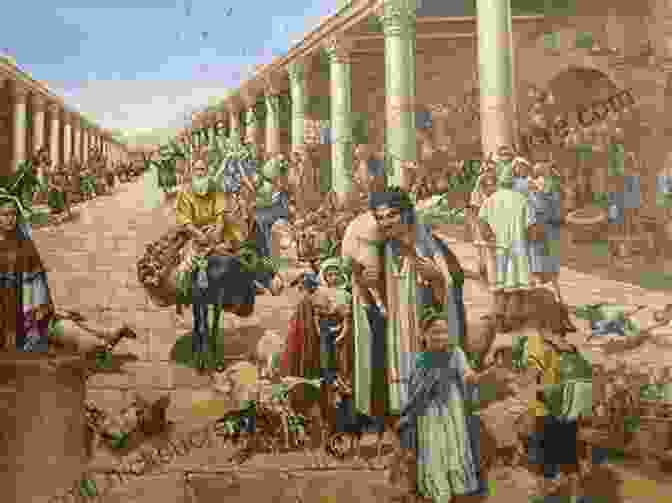
The cities of Late Roman Spain were instrumental in shaping the social, economic, and cultural fabric of the region. Some of the most prominent urban centers included Tarraco (modern Tarragona),Hispalis (Seville),Corduba (Cordova),and Emerita Augusta (Merida). These cities served as administrative, commercial, and religious hubs, boasting impressive public buildings, streets, aqueducts, and temples.
Urban life was vibrant and diverse. Merchants, artisans, and traders plied their wares in busy markets, while elites enjoyed lavish entertainments, such as chariot races and gladiatorial contests. Public baths, a hallmark of Roman civilization, provided opportunities for relaxation and social interaction. The cities were also centers of religious and intellectual life, with the rise of Christianity and the establishment of schools and libraries.
Social Structure and Economy
Late Roman Spain exhibited a complex social hierarchy. At the apex were the wealthy landowners, senators, and imperial officials. Below them were free citizens, including merchants, artisans, and farmers. The vast majority of the population, however, consisted of slaves, who labored in various capacities, from domestic service to agricultural work.
The economy of Late Roman Spain was primarily based on agriculture. The fertile plains and valleys produced a surplus of wheat, olives, and wine, which were exported to other parts of the empire. Mining was also a significant industry, with the extraction of gold, silver, and copper.
The Rise of Christianity
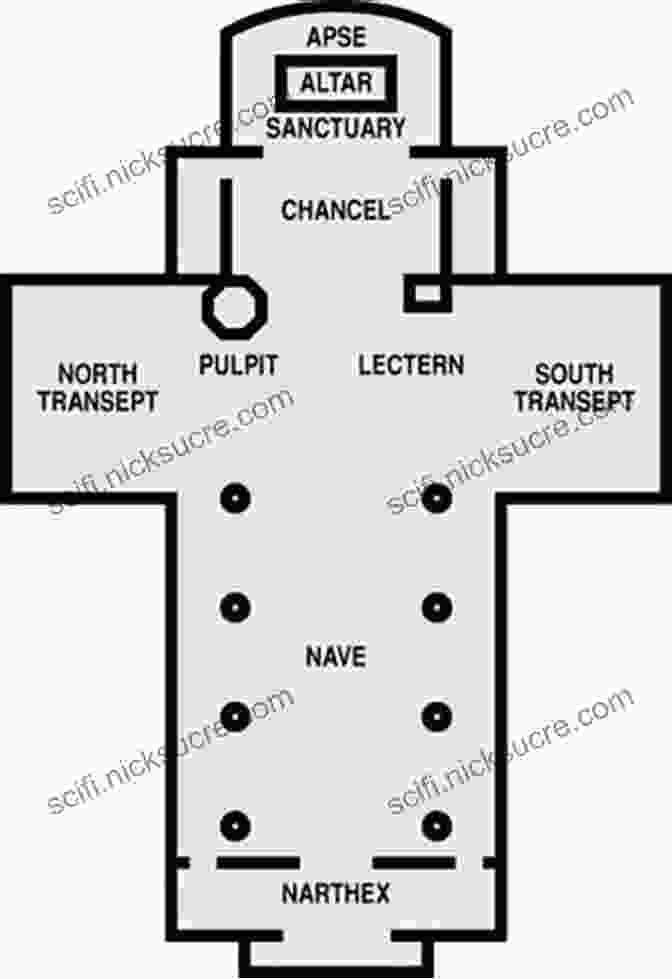
The spread of Christianity throughout the Roman Empire had a profound impact on Late Roman Spain. In the 4th century CE, Emperor Constantine I legalized Christianity, and it gradually became the dominant religion in the region. Christian communities established churches and organized themselves under the leadership of bishops.
The rise of Christianity significantly influenced the social and cultural landscape of Late Roman Spain. Christian values, such as charity and compassion, began to permeate society. Christian art and architecture flourished, and churches became important civic and spiritual centers.
The Decline of Roman Imperial Authority
The 3rd century CE witnessed the beginning of a gradual decline in Roman imperial authority in Spain. Political instability, economic crises, and military pressures from external invaders weakened the empire's grip on the region. By the 5th century CE, the Visigoths, a Germanic people, had established a kingdom in southwestern France and began to encroach on Roman territories in Spain.
In 410 CE, the Visigoths sacked Rome, a symbolic blow to the prestige of the empire. Over the next few decades, the Visigoths extended their control over much of the Iberian Peninsula, establishing their own kingdom with its capital at Tolosa (Toulouse).
Legacies of Late Roman Spain
The legacies of Late Roman Spain are still evident in the region today. The cities founded by the Romans continue to be major urban centers, and the ruins of Roman villas, aqueducts, and temples can be found throughout the Iberian Peninsula. The influence of Christianity remains strong, with many of Spain's most iconic churches and cathedrals built on the foundations of early Christian structures.
In addition to its physical and architectural legacy, Late Roman Spain also left an enduring mark on the region's culture and identity. The Visigoths, who ruled Spain for centuries, adopted and blended Roman traditions with their own Germanic customs, creating a unique synthesis that shaped the medieval history of the Iberian Peninsula.
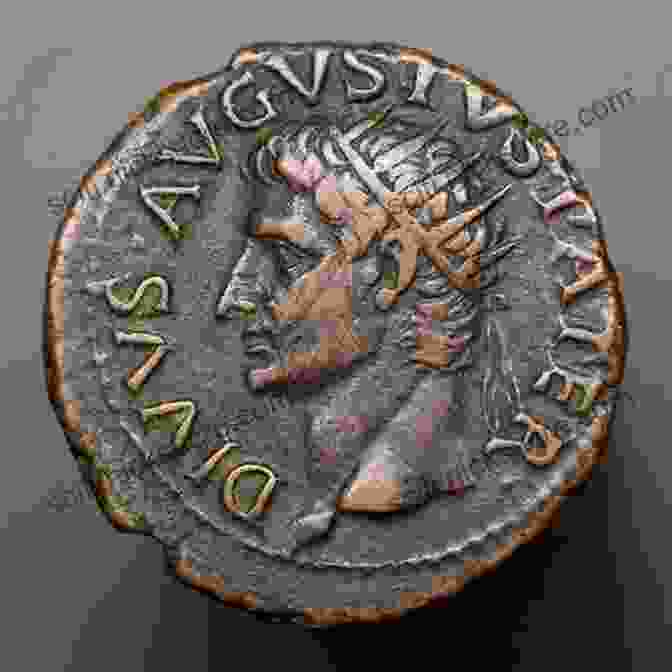
Late Roman Spain was a pivotal era that shaped the course of history in the Iberian Peninsula. Its cities were vibrant hubs of urban life, its economy was based on agriculture and mining, and its people embraced Christianity as their dominant religion. Despite the decline of Roman imperial authority, the legacies of Late Roman Spain continue to resonate in the region's modern-day identity, culture, and physical landscape. Exploring the rich history of this period offers valuable insights into the origins and development of one of Europe's most fascinating and enduring civilizations.
4.6 out of 5
| Language | : | English |
| File size | : | 4077 KB |
| Text-to-Speech | : | Enabled |
| Screen Reader | : | Supported |
| Enhanced typesetting | : | Enabled |
| Print length | : | 516 pages |
| Lending | : | Enabled |
Do you want to contribute by writing guest posts on this blog?
Please contact us and send us a resume of previous articles that you have written.
 Fiction
Fiction Non Fiction
Non Fiction Romance
Romance Mystery
Mystery Thriller
Thriller SciFi
SciFi Fantasy
Fantasy Horror
Horror Biography
Biography Selfhelp
Selfhelp Business
Business History
History Classics
Classics Poetry
Poetry Childrens
Childrens Young Adult
Young Adult Educational
Educational Cooking
Cooking Travel
Travel Lifestyle
Lifestyle Spirituality
Spirituality Health
Health Fitness
Fitness Technology
Technology Science
Science Arts
Arts Crafts
Crafts DIY
DIY Gardening
Gardening Petcare
Petcare Julie Kratz
Julie Kratz Lori Foster
Lori Foster Larry Pardey
Larry Pardey David Murray
David Murray Rinoa
Rinoa Shaana Berman
Shaana Berman Matthias Biehl
Matthias Biehl Hettie Brittz
Hettie Brittz Borja Loma Barrie
Borja Loma Barrie Holly Black
Holly Black Dinesh Kumar Goyal
Dinesh Kumar Goyal Jimmy Roberts
Jimmy Roberts Jennifer L Lopez
Jennifer L Lopez Carol A Dahir
Carol A Dahir Pamela A Hays
Pamela A Hays Christopher Setterlund
Christopher Setterlund Lewis Morris
Lewis Morris Angela Stevens
Angela Stevens Camille Soulier
Camille Soulier Priscilla T Brown
Priscilla T Brown Daniel Friebe
Daniel Friebe Bob Miller
Bob Miller David Wescott
David Wescott Julia Englund Strait Phd
Julia Englund Strait Phd John V Petrocelli
John V Petrocelli Huan Yang
Huan Yang House Of Talent
House Of Talent Randall M Rueff
Randall M Rueff Nate Schweber
Nate Schweber Cheryl Marlene
Cheryl Marlene James Mcmullan
James Mcmullan Simeon Wright
Simeon Wright Raymond Barrett
Raymond Barrett Fran Davis
Fran Davis National Fastpitch Coaches Association
National Fastpitch Coaches Association Patrisia Gonzales
Patrisia Gonzales Ron Woldoff
Ron Woldoff Ed Gruver
Ed Gruver Luke Jackson
Luke Jackson Kenneth C Roebuck
Kenneth C Roebuck Culture Smart
Culture Smart Raghuram Rajan
Raghuram Rajan Sevki Kuruoglu
Sevki Kuruoglu Cliff Jacobson
Cliff Jacobson Laurence D Houlgate
Laurence D Houlgate Eduardo Montano
Eduardo Montano Christian Smith
Christian Smith Kayvan Shokrollahi
Kayvan Shokrollahi Christine Lion
Christine Lion Kathryn Mcelroy
Kathryn Mcelroy Jayne Storey
Jayne Storey Sheila Willcox
Sheila Willcox Cal Pater
Cal Pater Steve Leonard
Steve Leonard Mark E Johnson
Mark E Johnson Catherine Ryan Gregory
Catherine Ryan Gregory Eric R Dodge
Eric R Dodge Nikki Glandon
Nikki Glandon Mia Reyes
Mia Reyes Peter Ralston
Peter Ralston Robert T Pennock
Robert T Pennock Haider Warraich
Haider Warraich Tim Swanwick
Tim Swanwick Elizabeth Hay
Elizabeth Hay Monica Mcgoldrick
Monica Mcgoldrick Mike Evans
Mike Evans Luisa Magarian
Luisa Magarian Peter N Peregrine
Peter N Peregrine Jacob Paul Patchen
Jacob Paul Patchen James Oseland
James Oseland Silvan S Schweber
Silvan S Schweber Pat Harvey
Pat Harvey Alan Pearce
Alan Pearce Nando Parrado
Nando Parrado Jerry Darkes
Jerry Darkes Megan Miller
Megan Miller John Mccollister
John Mccollister Peter Nabokov
Peter Nabokov Ross Mccluney
Ross Mccluney Zola Levitt
Zola Levitt Guy Gavriel Kay
Guy Gavriel Kay Ziya Tong
Ziya Tong Oluwatosin Adebanjo Ore
Oluwatosin Adebanjo Ore Kelly Koerner
Kelly Koerner Breann Blehm
Breann Blehm Brendan Donley
Brendan Donley Mark Rashid
Mark Rashid Jennie Naidoo
Jennie Naidoo Timothy Alberino
Timothy Alberino Dan Gable
Dan Gable Serena Williams
Serena Williams Dr Ray Makar
Dr Ray Makar Rachel Burgess
Rachel Burgess Detlev Piltz
Detlev Piltz Katherine A Dettwyler
Katherine A Dettwyler Michael Conway
Michael Conway John Gierach
John Gierach Jennifer Mccully
Jennifer Mccully Jason R Briggs
Jason R Briggs N M J Woodhouse
N M J Woodhouse Bill Nason
Bill Nason David Seidman
David Seidman Django Wexler
Django Wexler Sam Dogra
Sam Dogra Greg Mcmillan
Greg Mcmillan Chantal Sicile Kira
Chantal Sicile Kira Donald Hanley
Donald Hanley Hecateus Apuliensis
Hecateus Apuliensis Russell Bryant
Russell Bryant Carol Mccloud
Carol Mccloud Michael Kulikowski
Michael Kulikowski Mark Vonnegut
Mark Vonnegut Kindle Edition
Kindle Edition James Mooney
James Mooney Lola Glass
Lola Glass Jen Rose Smith
Jen Rose Smith Rand Cardwell
Rand Cardwell Joseph Campbell
Joseph Campbell J M Hofer
J M Hofer Michael Kodas
Michael Kodas Lee Mcintyre
Lee Mcintyre Marley Dias
Marley Dias Kevin C Kelleher Md Md
Kevin C Kelleher Md Md Carlo Zen
Carlo Zen Jane Adams
Jane Adams Shane Burcaw
Shane Burcaw Susanna Heli
Susanna Heli Maia Weinstock
Maia Weinstock Lynn E Ponton
Lynn E Ponton Nick Muxlow
Nick Muxlow Matt Davids
Matt Davids Scarlett Thomas
Scarlett Thomas John Sabino
John Sabino Philip Kramer
Philip Kramer 1st Ed 2021 Edition Kindle Edition
1st Ed 2021 Edition Kindle Edition Graham Denton
Graham Denton Don Currie
Don Currie Nancy H Diepenbrock
Nancy H Diepenbrock Ed Palattella
Ed Palattella Lily Field
Lily Field David L Cook
David L Cook Tom Mccoy
Tom Mccoy Bob Motley
Bob Motley Daniel Isberner
Daniel Isberner Jim Murphy
Jim Murphy Mathew Tekulsky
Mathew Tekulsky Kiera Cass
Kiera Cass Marc P Steinberg
Marc P Steinberg Jim Thompson
Jim Thompson Mones Abu Asab
Mones Abu Asab Smart Reads
Smart Reads Dr Barbara Sorrels
Dr Barbara Sorrels Tom Billinge
Tom Billinge Jennifer Boyle
Jennifer Boyle Jill Margaret Shulman
Jill Margaret Shulman Jennifer Niven
Jennifer Niven Jack Cavanaugh
Jack Cavanaugh Corinne Brown
Corinne Brown Jack Henderson
Jack Henderson Josephine Diebitsch Peary
Josephine Diebitsch Peary Jack Whyte
Jack Whyte Jane Watkins
Jane Watkins Ronald D Mcelroy
Ronald D Mcelroy Joni Levine
Joni Levine Julia Shaw
Julia Shaw Julietta Suzuki
Julietta Suzuki Elizabeth Bishop
Elizabeth Bishop Brenda Hiatt
Brenda Hiatt Matthew Cronin
Matthew Cronin Scott Waldie
Scott Waldie David Cockburn
David Cockburn Charles Hooton
Charles Hooton Grace Elizabeth Hale
Grace Elizabeth Hale Christie Aschwanden
Christie Aschwanden Peter Mcdougall
Peter Mcdougall Wendy Suzuki
Wendy Suzuki Bob Harig
Bob Harig Taste Of Home
Taste Of Home Michael Loynd
Michael Loynd Fodor S Travel Guides
Fodor S Travel Guides Carrie Rogers Whitehead
Carrie Rogers Whitehead Summer Batte
Summer Batte Lowell Skoog
Lowell Skoog Bob Morris
Bob Morris Lynn A Struve
Lynn A Struve Janet Evanovich
Janet Evanovich Marc Silver
Marc Silver Kristin Plain
Kristin Plain James Duggan
James Duggan Helen Corcoran
Helen Corcoran Francis Jonah
Francis Jonah James Kaiser
James Kaiser Joanna Breyer
Joanna Breyer Terry Mcmillan
Terry Mcmillan Sifu Slim
Sifu Slim Michele Riva
Michele Riva Bridie Gallagher
Bridie Gallagher Roland Nyns
Roland Nyns Mantak Chia
Mantak Chia S Connolly
S Connolly Sylvia Mercedes
Sylvia Mercedes Cecilia Chrapkowska
Cecilia Chrapkowska Jim Wilson
Jim Wilson Jill Krause
Jill Krause Diondre Mompoint
Diondre Mompoint Jason Brown
Jason Brown Kazumi Tabata
Kazumi Tabata Lisa Mckay
Lisa Mckay Sergey K Aityan
Sergey K Aityan William Pitts
William Pitts Asaf Rozanes
Asaf Rozanes Sally Moran
Sally Moran Gao Yisheng
Gao Yisheng Karen George
Karen George Philip Slayton
Philip Slayton Nicholas Bjorn
Nicholas Bjorn James Morgan Ayres
James Morgan Ayres Antti Laaksonen
Antti Laaksonen Diane Sticks Harsha
Diane Sticks Harsha Elena Lawson
Elena Lawson Mary Beard
Mary Beard Sacha Koborsi Tadros
Sacha Koborsi Tadros Michelle Garnett
Michelle Garnett Iskcon Revival Movement
Iskcon Revival Movement Tao Le
Tao Le Darwin V Ellis
Darwin V Ellis Lisa Takeuchi Cullen
Lisa Takeuchi Cullen Zecharia Sitchin
Zecharia Sitchin James Atkinson
James Atkinson Pedro Urvi
Pedro Urvi Sherman Alexie
Sherman Alexie Leah Hager Cohen
Leah Hager Cohen Robert T Kiyosaki
Robert T Kiyosaki Laura J Snyder
Laura J Snyder Dr Aviva Legatt
Dr Aviva Legatt Nfhs
Nfhs Tiffany Loggins Psyd
Tiffany Loggins Psyd William Spencer
William Spencer Harmon Cooper
Harmon Cooper Xiran Jay Zhao
Xiran Jay Zhao David Franklin
David Franklin Richard Williams
Richard Williams Charles H Townes
Charles H Townes Michael Inden
Michael Inden Robert Farris Thompson
Robert Farris Thompson Jodi Magness
Jodi Magness Robert Fisher
Robert Fisher David Christian
David Christian Jerry A Coyne
Jerry A Coyne Tom Bisio
Tom Bisio Sandra Brown
Sandra Brown James Lovegrove
James Lovegrove Craig Callender
Craig Callender Elena Kryuchkova
Elena Kryuchkova Nurse Academy
Nurse Academy Ruth M Tappen
Ruth M Tappen Paul Bellow
Paul Bellow Bradley Mayhew
Bradley Mayhew Felix Bittmann
Felix Bittmann Philip A Moore
Philip A Moore Lewis Howes
Lewis Howes Ceara Comeau
Ceara Comeau Julie Des Jardins
Julie Des Jardins Jeannie Tyrrell
Jeannie Tyrrell Ian Tuhovsky
Ian Tuhovsky Clinton Dobbins
Clinton Dobbins Robert Courland
Robert Courland Mary J Macleod
Mary J Macleod Immigration Consult
Immigration Consult Jeff Carreira
Jeff Carreira Diane Ehrensaft
Diane Ehrensaft Glen Mourning
Glen Mourning Melissa Gomes
Melissa Gomes William Shakespeare
William Shakespeare Logan Thompson
Logan Thompson Brad Walker
Brad Walker Print Replica Kindle Edition
Print Replica Kindle Edition N L Mclaughlin
N L Mclaughlin Luke Humphrey
Luke Humphrey Jessica Holsman
Jessica Holsman Karen Le Billon
Karen Le Billon Maggie Smith
Maggie Smith Scott Wilson
Scott Wilson Jacqueline Kelleher
Jacqueline Kelleher Charmaine Mckissock
Charmaine Mckissock Laura Freberg
Laura Freberg Jimmy Cornell
Jimmy Cornell Matt Harrison
Matt Harrison Karen Ehman
Karen Ehman Bob Forman
Bob Forman Kevin Williams
Kevin Williams Jakub Marian
Jakub Marian Tania Marshall
Tania Marshall Diane Ravitch
Diane Ravitch Lianna Marie
Lianna Marie Gregg Michaelsen
Gregg Michaelsen Chuck Carlson
Chuck Carlson Herbert Wolverson
Herbert Wolverson Phillip Stephen Schulz
Phillip Stephen Schulz Monica Gribben
Monica Gribben Blessing Agunloye
Blessing Agunloye Stuart Firestein
Stuart Firestein Robert Young Pelton
Robert Young Pelton Second Edition New Edition Updated Revised...
Second Edition New Edition Updated Revised... Zach Alexander
Zach Alexander Tony Hansen
Tony Hansen Sleiman Azizi
Sleiman Azizi Lynn Rosen
Lynn Rosen Staff Of The Harvard Crimson
Staff Of The Harvard Crimson Theodore Gray
Theodore Gray George Heineman
George Heineman Bob Meehan
Bob Meehan Martin Gardner
Martin Gardner John Horgan
John Horgan Tania Aebi
Tania Aebi Derek Cheung
Derek Cheung Hugh Marriott
Hugh Marriott Mami Wata
Mami Wata Haruki Murakami
Haruki Murakami Rod Baker
Rod Baker Sharon M Ravitch
Sharon M Ravitch Jennifer Pastiloff
Jennifer Pastiloff Charles Johnson
Charles Johnson Booksumo Press
Booksumo Press Curt Sampson
Curt Sampson Daphne Adler
Daphne Adler Tracy Deonn
Tracy Deonn Ed Viesturs
Ed Viesturs Jared Hargrave
Jared Hargrave James R Evans
James R Evans Yaron Seidman
Yaron Seidman Tobias Macey
Tobias Macey Mahzarin R Banaji
Mahzarin R Banaji Bob Brister
Bob Brister 1st Ed 2020 Edition Kindle Edition
1st Ed 2020 Edition Kindle Edition Gordon H Chang
Gordon H Chang Rohan Agarwal
Rohan Agarwal Doris Pilkington
Doris Pilkington Lewis Smile
Lewis Smile Mark W Gaither
Mark W Gaither Steven Trustrum
Steven Trustrum Jessica Mayer Koren
Jessica Mayer Koren Loralee Leavitt
Loralee Leavitt Tiffany Vincent
Tiffany Vincent David Sammel
David Sammel Linda Fairley
Linda Fairley Connecticut Forest And Park Association
Connecticut Forest And Park Association Julie Dubrouillet
Julie Dubrouillet John Skinner
John Skinner Robert J Sternberg
Robert J Sternberg Robin Moore
Robin Moore Richard J Foster
Richard J Foster Brittany Noelle
Brittany Noelle Bruce Kershner
Bruce Kershner Paul Orland
Paul Orland Teresa Denton
Teresa Denton Norm Flayderman
Norm Flayderman Bruce Sutherland
Bruce Sutherland Paddy Ashdown
Paddy Ashdown Ted Kerasote
Ted Kerasote Gary Letcher
Gary Letcher Barry Lewis
Barry Lewis Collegiate Learning
Collegiate Learning Tehlor Kay Mejia
Tehlor Kay Mejia Steven A Finkler
Steven A Finkler Leo Baker
Leo Baker Terri Jean
Terri Jean Martin Toms
Martin Toms Su Ad Abdul Khabeer
Su Ad Abdul Khabeer Daniel Kahneman
Daniel Kahneman Rob Walker
Rob Walker Bob Gaines
Bob Gaines Leigh Calvez
Leigh Calvez David Mayer
David Mayer Fr Vincent Lampert
Fr Vincent Lampert Greg Wolfe
Greg Wolfe Three Over Eight Learning
Three Over Eight Learning Becca Anderson
Becca Anderson Jorge Croda
Jorge Croda Kevin Ticen
Kevin Ticen Fred Medina
Fred Medina United States Government Us Army
United States Government Us Army Alan Anderson
Alan Anderson Derek Johnson
Derek Johnson Peter Byrne
Peter Byrne Richard Bach
Richard Bach Dave Pine
Dave Pine Nicole Howard
Nicole Howard Lawrence M Krauss
Lawrence M Krauss Fiona Danks
Fiona Danks Michael Eric Dyson
Michael Eric Dyson L Waxy Gregoire
L Waxy Gregoire Chris Cheng
Chris Cheng Tara Lazar
Tara Lazar Dan Hamilton
Dan Hamilton Rick Sapp
Rick Sapp Katherine Roberts
Katherine Roberts Deirdre A Scaggs
Deirdre A Scaggs Theodore Dalrymple
Theodore Dalrymple Richard Grant
Richard Grant Joe Tasker
Joe Tasker William R Miller
William R Miller Marion Zimmer Bradley
Marion Zimmer Bradley Lou Kasischke
Lou Kasischke Emma Fick
Emma Fick Brian Libby
Brian Libby Lyn Millner
Lyn Millner Ricardo Pompa
Ricardo Pompa Brook Waters
Brook Waters Bill Nowlin
Bill Nowlin Jonathan Howard Md
Jonathan Howard Md Rachel Marie Martin
Rachel Marie Martin Sian O Gorman
Sian O Gorman George M Church
George M Church Art Smith
Art Smith Bob Thomas
Bob Thomas Aaron Oster
Aaron Oster George G Morgan
George G Morgan Jason Thalken
Jason Thalken Malcolm Williams
Malcolm Williams Frank Giampaolo
Frank Giampaolo Richard Headstrom
Richard Headstrom Selma H Fraiberg
Selma H Fraiberg Paula Petrella
Paula Petrella Eva Ibbotson
Eva Ibbotson 1st Ed 2019 Edition Kindle Edition
1st Ed 2019 Edition Kindle Edition Roger Kopanycia
Roger Kopanycia Kim Heldman
Kim Heldman Dan Wowak
Dan Wowak Karen Gershowitz
Karen Gershowitz Bobbi Conner
Bobbi Conner Michael R Canfield
Michael R Canfield Language Guru
Language Guru Tracy Moore
Tracy Moore John Andrisani
John Andrisani Lieven Vandenberghe
Lieven Vandenberghe Sigmund Freud
Sigmund Freud Tom Stienstra
Tom Stienstra Brian Zepka
Brian Zepka 1st Edition Kindle Edition
1st Edition Kindle Edition Cindy C Bennett
Cindy C Bennett Jody Hedlund
Jody Hedlund Bradley Garrett
Bradley Garrett Candace Walsh
Candace Walsh Michael Hoy
Michael Hoy Stephen Armstrong
Stephen Armstrong Joe Hendershott
Joe Hendershott Stephanie J Scott
Stephanie J Scott Melissa Marr
Melissa Marr
Light bulbAdvertise smarter! Our strategic ad space ensures maximum exposure. Reserve your spot today!
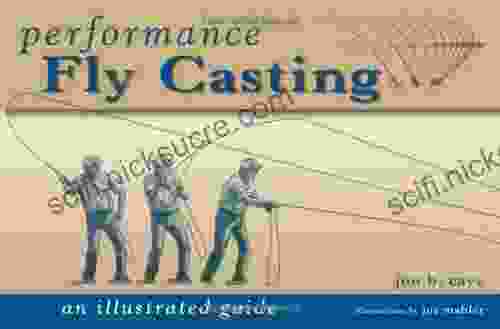
 Don ColemanPerformance Fly Casting: An Illustrated Guide to Fly Casting Techniques and...
Don ColemanPerformance Fly Casting: An Illustrated Guide to Fly Casting Techniques and...
 Hudson HayesSummary of Dr. Gundry's Diet Evolution: A Comprehensive Guide to Reversing...
Hudson HayesSummary of Dr. Gundry's Diet Evolution: A Comprehensive Guide to Reversing... Floyd PowellFollow ·7.6k
Floyd PowellFollow ·7.6k Thomas PynchonFollow ·11.4k
Thomas PynchonFollow ·11.4k Enrique BlairFollow ·2.4k
Enrique BlairFollow ·2.4k Eddie PowellFollow ·14.7k
Eddie PowellFollow ·14.7k Duncan CoxFollow ·10.7k
Duncan CoxFollow ·10.7k Douglas FosterFollow ·13.8k
Douglas FosterFollow ·13.8k Preston SimmonsFollow ·13k
Preston SimmonsFollow ·13k Howard BlairFollow ·19.7k
Howard BlairFollow ·19.7k
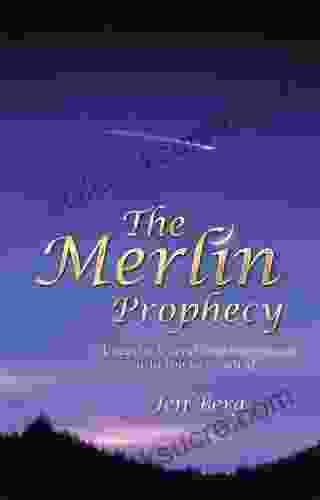
 Dennis Hayes
Dennis HayesMystic Legend and His Epic Crusade Into the New World: A...
The story of Mystic Legend is...
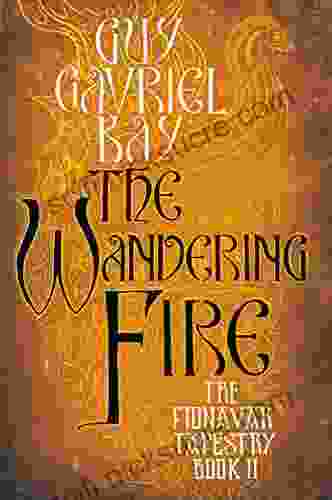
 Braden Ward
Braden WardThe Wandering Fire: A Captivating Fantasy Epic in the...
: A Realm of Enchantment and...

 Nathaniel Hawthorne
Nathaniel HawthorneStarstruck Brenda Hiatt: A Journey to Stardom
Brenda Hiatt's journey to...
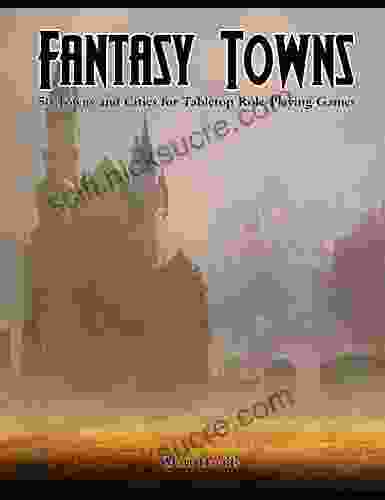
 Clark Campbell
Clark Campbell50 Enchanting Towns and Cities for Your Fantasy Tabletop...
Are you a dungeon master looking for the...

 W.B. Yeats
W.B. Yeats15 Natural Ways to Fix PCOS (Polycystic Ovary Syndrome)
Polycystic ovary syndrome (PCOS) is a hormonal...
4.6 out of 5
| Language | : | English |
| File size | : | 4077 KB |
| Text-to-Speech | : | Enabled |
| Screen Reader | : | Supported |
| Enhanced typesetting | : | Enabled |
| Print length | : | 516 pages |
| Lending | : | Enabled |


